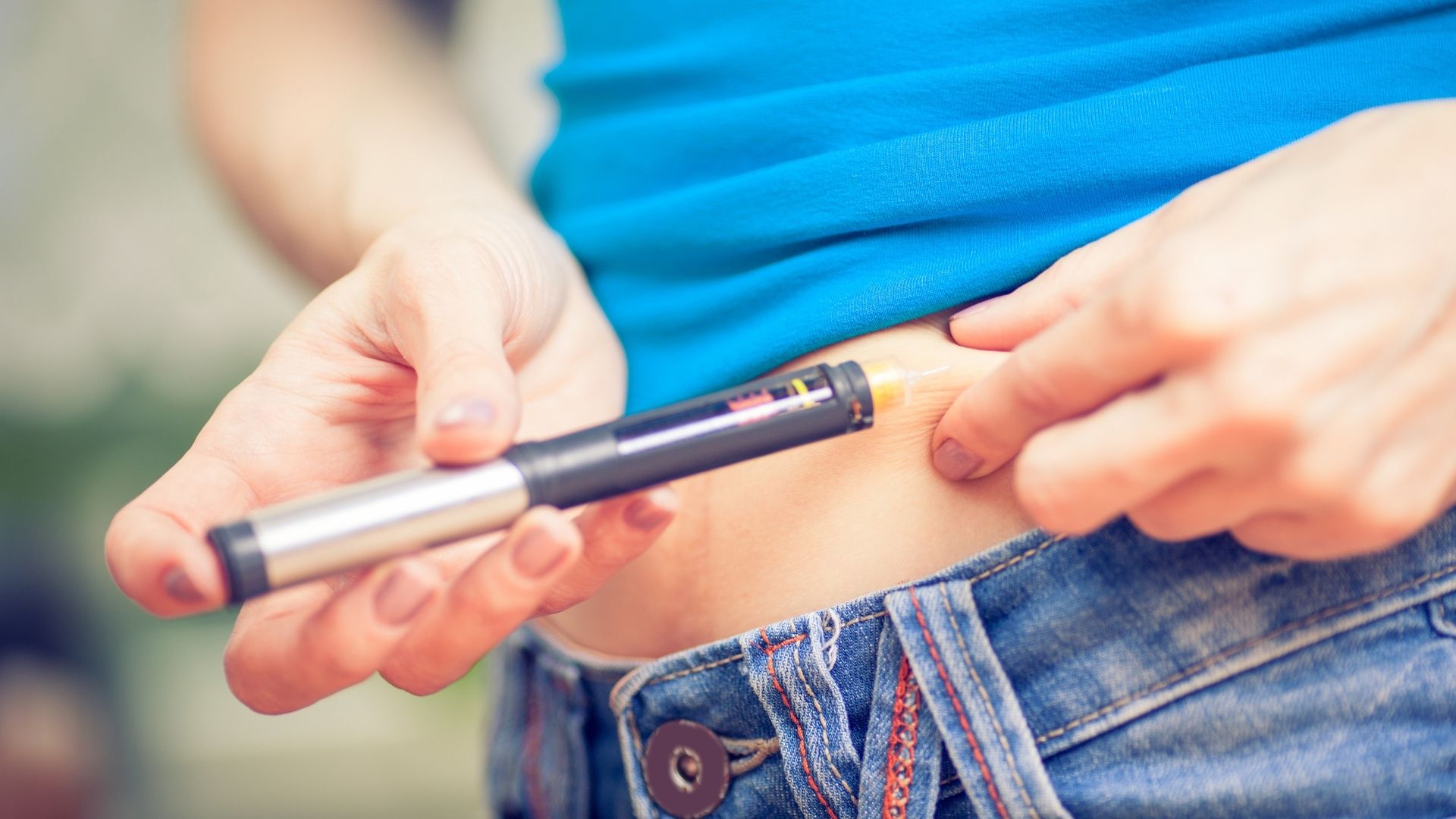Diabetes is a disease that has been around for centuries. It was first discovered in 569 AD when an Indian physician named Sushruta described symptoms of excessive thirst and urination, as well as extreme weight loss.
This means “sweet urine” in Latin because the honey-like sugar builds up in the blood by its sweet taste on the tongue.
Contents
What Exactly is it?

Diabetes is a condition in which there is too much glucose (sugar) in the blood. either because your body does not produce enough insulin or it cannot use its insulin as well as it should be used. this can lead to high levels of sugar in your blood.
Excess glucose in your blood can harm your health over time. Although it has no cure, you may take steps to manage your condition and stay healthy.
Sometimes it is referred to as a touch of sugar or borderline diabetes. These phrases imply that someone doesn’t have it or has a less severe case, but every case is very critical.
Type 1, type 2, and gestational diabetes are the three most common types of this disease.
Type 1 Diabetes
This is an autoimmune disease. The immune system assaults and destroys pancreatic cells, where insulin is manufactured. It’s unclear what triggers this destruction. Around 10% of persons suffering from this version.
Signs and Symptoms
Symptoms include:
- Increased urination
- Blurry vision
- Extreme thirst and hunger
- Unexplained weight loss, despite normal eating habits.
Causes
Because type 1 has no cure, doctors are still studying its causes. The immune system may be to blame in some individuals. It’s also possible that a virus activates the immune response.
Risk Factors
If you have type 1 diabetes, it’s likely due to one or more of the following:
- You are a child or adolescent,
- your parent or sibling has the disease, or
- you have certain genes that are associated with it.
Treatment

Insulin is the main treatment for this ailment. It replaces the hormone your body isn’t able to produce, that is –Within 15 minutes, rapid-acting insulin begins to work and its effects last for 3 to 4 hours. Short-acting insulin starts working within 30 minutes and lasts 6 to 8 hours. Intermediate-acting insulin begins working within 1 to 2 hours and continues to work for 12 to 18 hours. Long-acting insulin begins working a few hours after the shot.
Diet
Your medical professionals may advise you to eat fewer carbohydrates daily. You’ll also need to keep your carb intake in balance with your insulin dosages.
Type 1 in Children
Type 1 diabetes usually occurs in children. One of the most noticeable indications is an increase in urination. After being toilet trained, children with this type may begin to wet the bed. Signs include extreme thirst, tiredness, and hunger. The condition can manifest itself by causing high blood sugar levels and dehydration.
Type 2 Diabetes
This happens when the body’s cells become resistant to insulin, causing sugar to build up in the blood.
Symptoms
Type 2 diabetes has the following symptoms:
- increase in hunger
- thirst is increased
- frequent urination
- blurry vision
- tiredness
- sores that are slow to heal
It can also induce recurring infections. This is because high blood sugar levels make it more difficult for the body to heal.
Causes
Type 2 diabetes is caused by a combination of genes and lifestyle choices. Being overweight or obese raises your risk as well. Carrying extra weight, particularly in your belly area, makes your cells more resistant to the effects of insulin on blood sugar levels.
This condition runs in families, with relatives sharing DNA that increases their chances of developing type 2 diabetes and other autoimmune diseases.
Risk Factors
Your risk of getting type 2 goes up if you:
- are overweight
- are age 45 or older
- have a parent or sibling with the condition
- aren’t physically active
- have had gestational diabetes
- have prediabetes
- If you have high blood pressure, high cholesterol, or high triglycerides.
- have African American, Hispanic or Latino American, Alaska Native, Pacific Islander, American Indian, or Asian American ancestry.
Treatment
Some people can control type 2 diabetes with diet and exercise. If lifestyle modifications aren’t enough to help you manage your blood sugar levels, you’ll need to take medication. Some persons with type 2 diabetes require insulin.
Diet

Carbohydrate counting is an important aspect of managing diabetes. The number of carbohydrates you should consume at each meal should be determined by a dietitian.
To maintain your blood sugar levels constant, try to eat small meals several times a day. Focus on healthy foods such as:
- Fruits and vegetables,
- whole grains, lean protein sources such as fish and poultry
- healthy fats like olive oil and nuts
Other foods can be detrimental to your efforts to maintain blood sugar levels in check.
Children and Type 2 Diabetes
Type 2 diabetes is now more prevalent in youngsters since more children are overweight or obese. Type 2 diabetes is on the rise among this age group. Untreated type 2 diabetes has the potential to result in a variety of serious diseases, including heart disease, kidney disease, and blindness. Your child can control their blood sugar levels by eating healthily and exercising regularly.
Gestation Diabetes

Gestational diabetes is an illness that affects pregnant women and results in high blood sugar. The placenta produces insulin-blocking chemicals, which cause this type of diabetes.
It can appear out of the blue in women who have never suffered from it. The placenta produces hormones that make your body more resistant to the effects of insulin.
Some women who were diabetic before getting pregnant continue to have diabetes after they become pregnant. Pregestational diabetes is the term to describe this situation.
Gestational diabetes will go away after you give birth, but it greatly raises your chances of developing it later.
Signs
Women who have gestational diabetes rarely experience any symptoms. The condition is often identified during a routine blood sugar screening or an oral glucose tolerance test done between the 24th and 28th weeks of pregnancy. A woman with gestational diabetes might in rare circumstances develop excessive thirst or urination.
Causes
Gestational diabetes is a form of diabetes that develops during pregnancy as a result of hormonal changes. The placenta secretes hormones that promote insulin resistance in pregnant women’s cells. This can lead to high blood sugar throughout pregnancy.
Overweight pregnant women are three times more likely to develop gestational diabetes than normal-weight women.
Risk Factors
If you do not get enough exercise, your diabetes risk for gestational diabetes rises if you:
- one is over 25 years old
- is overweight is due to age
- had gestational diabetes was present during a previous pregnancy
- given birth to a kid weighing more than 9 pounds
- have a family history of type 2 diabetes
- had PCOS
Complications

Uncontrolled gestational diabetes can cause a variety of issues that affect both the mother and her child. The following are examples of problems that can affect the fetus:
- stillbirth, preterm birth, higher-than-average weight at delivery, and jaundice. After your child is born, he or she might be at increased risk for the following problems:
- type II diabetes
- Being overweight also increases your chances of developing type II (non-gestational) later in life. Women who had gestational diabetes are more likely to develop it than other women once they become
The mother can have complications such as high blood pressure (preeclampsia) or type 2 diabetes. C-section delivery may also be required, often known as a C section.
The risk of the mother developing gestational diabetes in future pregnancies rises as well.
Treatment
During pregnancy, you’ll need to check your blood sugar levels several times a day. If the level is high, dietary changes and exercise may or may not be enough to bring it down.
Insulin should also be used if diet and exercise are not enough. Insulin is suitable for a growing infant.
Diet
During these nine months, eating a well-balanced diet is critical for both you and your baby. Making the appropriate food selections may also assist you in avoiding diabetes medications.
Make an effort to eat more veggies. You may avoid consuming too much sugar or salt by limiting sugary and salty meals. Although you’ll need some sugar to feed your growing youngster, you should stay clear of overdoing it.
Make an eating plan with the aid of a dietitian or nutritionist if possible. They’ll make sure your diet has the correct proportions of macronutrients.
How to Diagnose Diabetes

Anyone who has signs or is at risk for diabetes should be tested. Gestational diabetes may be detected during the second or third trimesters of pregnancy in women.
These blood tests are used to diagnose prediabetes and diabetes by doctors:
- The fasting plasma glucose (FPG) test measures your blood sugar after you’ve fasted for 8 hours.
- The A1C test provides a picture of your blood sugar levels over the last three months.
Your doctor will check your blood sugar levels between the 24th and 28th weeks of pregnancy to diagnose gestational diabetes.
One is an hour after your blood sugar level is tested during the glucose challenge test. during a 3-hour glucose tolerance test, your blood sugar levels are checked after you fast overnight and drink a sweetened beverage.
The sooner you are diagnosed with diabetes, the easier it is to start therapy.
Prevention
Type 1 diabetes isn’t preventable since it is the result of an immune system malfunction. Some causes of type 2 diabetes, such as your genetics or age, are beyond your control.
However, several risk factors are in control. The majority of diabetes prevention methods include only minor changes to your diet and exercise routine.
Here are some things you may do to delay or avoid type 2 diabetes if you have pre-diabetes:
- Spend at least 150 minutes each week doing moderate-intensity aerobic exercises, such as walking or cycling.
- Remove saturated and trans fats from your diet, as well as refined carbohydrates.
- Consume more fruits, vegetables, and whole grains.
- Reduce the amount you eat.
- If you’re overweight or obese, aim for a 7% decrease
Conclusion
Diabetes is a manageable condition. If you or someone in your family has it, there are some things to consider when it comes to managing the disease and giving yourself the best chance of living an active life with fewer complications. We’ve compiled this blog post so you know what precautions to take for those who have it, as well as how they should monitor their blood sugar levels throughout each day. The more aware we all are about our health conditions and potential risks involved, the better prepared we will be for taking care of ourselves.
A Word from MantraCare
Do you want to get rid of diabetes? Join our online diabetes consultation program and reverse your Diabetes naturally through lifestyle changes such as a Personalized Diet plan, Exercise, dieticians, and health coaches.
Keep your employees healthy and productive and reduce healthcare costs and absenteeism with MantraCare Wellness Employee Diabetes Reversal Program.


